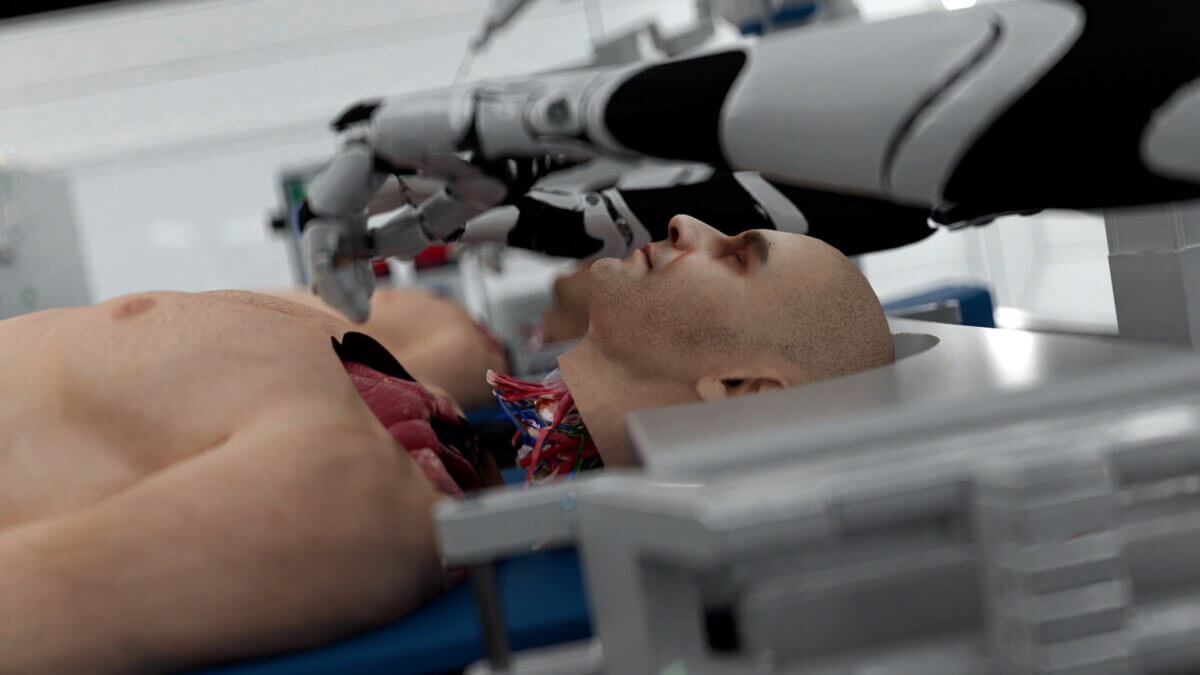
At the crossroads of neurosurgery, robotics, and artificial intelligence, a bold and controversial idea is taking shape: that fully robotic systems could do the first human head transplant in the next ten years. A futuristic medical startup came up with the idea, and it has been getting more attention as surgical robotics continue to improve. The goal is to see how far modern medicine can go. The idea has sparked both interest and doubt, but it also shows how quickly things are changing and how engineering and biology may soon come together in ways that have never been seen before.
The suggested method calls for taking a living person’s head off their original body and putting it on a healthy donor body. This will all be done by very precise surgical robots that are controlled by advanced AI. These systems would use real-time imaging at the molecular level, automated microsurgical tools, and algorithms that can reconnect blood vessels, nerves, and even the spinal cord with unmatched accuracy. Supporters say that robotics could get rid of the human mistakes and physical limits that have made such surgeries impossible in the past. In theory, the robots could do the surgery in a short amount of time to keep the brain alive, limit bleeding, and perfectly align the neural tissues.
The people behind the project say that the procedure is meant for patients with terminal or degenerative diseases who have no other options for treatment. This includes people who are completely paralyzed, have serious muscle problems, or have systemic diseases that make their bodies fail but keep their brains healthy. For these patients, a new body could mean not only survival but also the chance to move around and be free again. However, there are still major biological problems that need to be solved. The biggest one is how to fully reconnect the spinal cord so that signals can flow between the brain and the donor body. No scientist has yet restored full spinal-cord continuity in a human, even after decades of research.
The proposal poses significant ethical and philosophical dilemmas in addition to scientific challenges. A human head transplant makes it hard to tell where identity, personhood, and bodily autonomy begin and end. Who would the resulting individual be in terms of the law or society—the donor, the recipient, or someone completely different? There are also worries about how these surgeries might affect people’s mental health, whether donor families give their permission, and whether poor communities might be taken advantage of if these surgeries ever become commercialized. Ethicists caution that medical aspirations should not exceed humanity’s capacity for responsible decision-making.
Many experts, on the other hand, are still not sure that head transplants will be possible in ten years. They say that even advanced robotic surgery is still very new and that there are a lot of biological problems to solve. Still, AI-assisted surgery, neural regeneration, and organ transplantation are all moving forward at a faster rate. In just a few decades, procedures that were once thought to be impossible, like full-face transplants or lab-grown organs, have become a reality in the medical field. It’s not impossible that more breakthroughs could change what can be done sooner than expected.
For now, robotic head transplantation is still a speculative frontier, a mix of an ambitious medical vision and a thought experiment that makes people think. It doesn’t matter if it happens by the end of the decade; the conversation it starts is important. It makes people think about the future of human enhancement, the ethics of radical surgery, and the big question of what really makes us who we are. If these technologies keep getting better, the next ten years might not bring the procedure itself, but they will almost certainly lay the groundwork for it to happen.